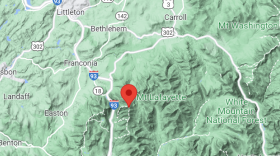Bird calls rend the air as evening descends over River Highlands State Park in Cromwell. The yellow trail leads to the edge of the Connecticut River, and with me are my kid and his friends.
Our guide is Sarah O’Hare, author of the newly-published “Hiking With Kids Connecticut: 45 Great Hikes for Families.”
The boys are curious and the woods are filled with many wonders.
Suddenly, there’s a burst of excited chatter. They’ve just spotted something slithering in the water.
It’s a salamander, and they rush to pick him up.
“He’s making a run for it,” O’Hare says, smiling.
O’Hare, 71, of Wethersfield, says she wrote the guide because she wanted to “share all these woodland experiences with the children of Connecticut. We have so much by way of woodlands and trails.”
Connecticut has more than 2,000 miles of trails criss-crossing mountains, meadows, waterfalls, marshes, hills and woodlands.
Despite this richness – over 20 million acres of state parks stretch across the U.S. – children can spend up to 45 hours each week in front of a screen, and less than 10 minutes a day playing outdoors, according to the Children & Nature Network, a nonprofit co-founded by Richard Louv.
Louv, author of “Last Child in the Woods: Saving Our Children from Nature-Deficit Disorder,” writes that “by weighing the consequence of the disorder, we can also become more aware of how blessed our children can be — biologically, cognitively, and spiritually — through positive physical connection to nature.”
“Young people and their parents often spend way too much time indoors on their phones, scrolling through social media and watching videos,” Dr. Raviv Berlin, chair of psychiatry at Stamford Health tellsld Connecticut Public via email. “Hiking is a perfect way to break out of that routine, [and it] allows children to be present with nature, taking in all the wonderful sights, sounds, and smells that have inspired humans for generations.”
Berlin, a child and adolescent psychiatrist, says children gain both from being physically active outside and from building a closer bond with their parents. “It can also encourage healthy habits that last a lifetime,” he says.
Back on the trail in Cromwell, the children are fascinated by a spider, a bug, a burl, a roly-poly, a frog and an interesting odor.
“Smells like garlic! Just a little scent of skunk!,” they exclaim.
O’Hare informs them that they’re smelling skunk cabbage, an unfortunate name for a rather pretty plant with gigantic green leaves. There are wildflowers too, a profusion of Canada mayflower, and false Solomon’s seal. There’s plenty of fern mixed in with Jack-in-the pulpit.
“I hike a lot because I like the peace,” O’Hare says. “It’s just natural peace in the woods.”
She’s led groups throughout New England, hiking the entire length of Vermont on the Long Trail and much of the Appalachian in New England.
The trails described in her book – including the one we’re on – span all corners of Connecticut, leading through “forests, and fields, over mountains, and along ridges, brooks, marshes, and rivers. They pass by waterfalls, caves, crumbling stone foundations, and stone walls,” she writes.
We reach the Connecticut River and the canoe camp site is flooded.
The children race each other to the water’s edge to see what they can find.
As we turn back, O’Hare begins to play her Native American flute.
The notes blend with the land. And the trees and streams seem to say, “Come back again soon. You belong here.”





